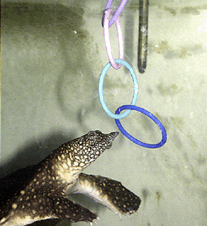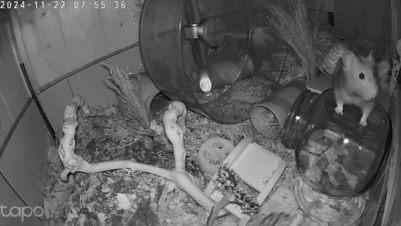IN February 2013 I was asked by the World Horse Welfare (WHW) charity to visit Nicaragua and assess its veterinary involvement in that country, with particular reference to the dental state of the large number of horses which are treated at its clinics. It was ideal timing for me as I could call in for a week on my way home from Argentina.
Nicaragua is a small Latin American country with both a Caribbean and a Pacific coastline. Sadly, WHW had too tight a schedule for me to have time to visit the beach. I certainly hope to return as a tourist as the Nicaraguans are particularly friendly. I did have a chance to sample their beer, which is excellent.
One of the WHW stations is near to a volcano which I did manage to visit. It is active and known locally as the “Gate of Hell”. There are a whole line of volcanoes down the length of the country, but no one seems concerned that they might all go up in smoke tomorrow. The dry tropical climate leads to a very relaxed existence.
There are a very large number of horses in Nicaragua and they play a vital role in many families’ lives as they are used to pull carts which provide transport for the population. These carts carry building materials and recycling refuse; they are privately owned and provide an income to the owner and his family.
They are actually ponies of a standard type, clean limbed with relatively small heads, standing 13 hands and weighing 200-300kg. They are exceptionally thin, which is one of the main concerns of WHW and the main reason for my visit. Do large numbers of them have dental problems? Could this be the reason for their often cachectic state?
Saddlery and farriery
Up to now the making of good humane tack has been a focus for WHW. It has set up an excellent small cottage-industry type of workshop which produces tack, leather goods and humane cart saddles. These are sensibly priced and very saleable.
The workshop is attached to a shop which not only sells the goods but is also a vet/farm pharmacy which sells medicines and other products for dogs, farm animals, chickens and horses.
A large number of the items would be POMs in a UK situation but this is perfectly permissible in Nicaragua. Several members of the staff are very well informed and would easily be equivalent to a “suitably qualified person” (SQP) in the UK. The whole enterprise can easily be sustainable when the WHW project finishes at the end of 2014.
A hundred yards down the road is the WHW veterinary and farriery centre. This has two small offices, two stores and a larger area for housing the veterinary motorbike. Behind the centre is a treatment area and a large corral for visiting horses. In the treatment area are two good forges, specifically to make horseshoes from the raw materials available locally.
Visiting farriers train Nicaraguans not only to trim and shoe horses’ feet but also to make horseshoes. There is no hot shoeing carried out in Nicaragua so there is no requirement for these forges to be portable.
Nine-week course
WHW runs courses for farriers which take nine weeks. First of all the students are shown how to work the hot iron; they then are helped to make all the tools which they will require. This is an excellent exercise as it not only is good training but it also gives the students the tools they will require to earn a living.
The students are taught to make the shoes, all from easily, locally obtainable, iron. Finally, the students are given careful one-to-one training on foot trimming and foot balancing before being trained to actually shoe horses. It is an excellent course and there is no doubt there is a real benefit to the local horses, which are either very poorly shod or are untrimmed.
Veterinary cover is provided by WHW in the form of a locally-trained vet called Chico, a kind, strong man with a good sense of humour. I only wish my Spanish was better so that I could have enjoyed more of the jokes.
My task was considerably helped by a Nicaraguan girl, Chris, who acted as my interpreter and also translated my PowerPoint presentations into Spanish. I hope these will be helpful to WHW in other countries in Latin America.
Chico works out of the main WHW centre in Veracruz and sees horses at the clinic.
He also regularly visits other areas around the Capital city Managua, mainly to the east. These are both in urban and rural environments. His transport is a motorbike with his equipment strapped in a box on the back. He is accompanied by a lovely Nicaraguan girl, Izayana Lacayo, who is really a vet/tech but also keeps excellent records which are brought back at the end of the day and put on the computer at the centre by Paulo Jiron.
Izayana told me with some pride that she still managed to go on the motorbike when she was over eight months pregnant. Thank goodness Chico is a good driver as the roads and the traffic are far from ideal!
No resistance
On these visits he examines every horse which is presented. He carefully uses a weigh band and the horse’s weight is recorded after measurements of its girth and height are measured. All the horses are on a deworming programme strictly on a dosage based on an accurate weight measurement. Ivermectin and fendendazole wormers are used. So far from my research on the internet there is no resistance to anthelmintics recorded in Nicaragua.
All the horses receive a delousing treatment and an ocular medication which is meant to reduce fly worry and lacrimation. They also receive a vitamin/mineral injection. This contains a large amount of iron and apparently does not cause any reaction at the site of the intramuscular injection. A fresh needle and syringe is used for every horse. Chico is very capable at giving these injections. Very few horses resent the treatment and I never saw him fail.
I saw very few horses requiring any other treatment. There were some with equine sarcoids which received a proprietary injection for “warts”, which was said to be beneficial! All the horses which showed saddle sores had these carefully dressed. They were cleaned gently with pevidone iodine solution and then gentian violet spray was applied with fly repellent around the wounds.
I tried to suggest oily creams might be more appropriate but it was decided these would be too expensive. Honey was freely available locally and was very inexpensive so it was decided to try this to keep the wounds moist. Naturally fly control was continued.
One four-year-old mare was presented with a cough and a vaginal discharge. She was said to be seven months pregnant. She did not have a raised temperature and her pulse was 34. She was too small to perform either a rectal or a vaginal examination. I wondered if she was infected with equine herpes virus and was about to abort.
Sadly, there is no way any testing could be carried out in Nicaragua. She was given an injection of antibiotics.
There was one three-year-old stallion with an unusual history and condition. It had been ridden for over a hundred miles to Veracruz from the mountains of Nicaragua to the west. It had arrived in very good condition but had rapidly lost weight and developed ventral oedema. It had been given antibiotics and I think a variety of other treatments but was now extremely thin.
The majority of the ventral oedema had dispersed but the scrotum and the prepuce were still very enlarged. I assume the stress of the long ride and the reduction of altitude (more than 6,000ft) set off a lymphangitis. It was decided to put the stallion on a long-term daily course of two grams of phenylbutazone orally and hope the swelling subsided.
Two lame horses were seen. One had pus in the right hind. The pus was drained, then poulticed with gauze and gutter tape. It was much improved two days later.
The other lame horse had a swelling of its left hind fetlock joint. It was given an intravenous injection of phenylbutazone and a follow-up was suggested in a week. Although rest was advised, Chico thought as soon as the horse was sound it would be working again. He said it was very difficult to stop owners working their horses.
Dentistry
Over the five days we went to seven communities and carried out 185 dental checks. It was very gratifying not only to see this excellent response but also to see that these horses were in much better body condition than the horses seen elsewhere.
There may be two reasons for this: they are not only kept in a rural environment but also there is a wellestablished grass cutting and carrying operation set up by some of the owners who sell off the excess grass to other owners.
When the horses were examined their age was recorded. If the age was known and the known age corresponded to the age indicated by the incisors, that was recorded. However, in many instances the owner did not know the age and in these cases I estimated the age from the incisor teeth.
The horses were a very young cohort compared to my patients in the UK. This may be the reason for the much larger numbers of normal horses seen in Nicaragua as shown in the Table.
Certainly genetics also plays a part. This can be seen in the large number of horses with under-shot bottom jaws called sow mouthed horses seen in Nicaragua. Horses with under-shot bottom jaws are rare in the UK. These under-shot horses, as you would expect, show focal dental overgrowths (FDOs) on the front cheek teeth on their lower jaw (called 306 & 406) and the back cheek teeth on the upper jaw (called 111 & 211).
Parrot mouth, i.e. an elongation of the upper jaw, is common in the UK but is rare in Nicaragua. In both populations, horses showing a parrot mouth also show FDOs on the front cheek teeth on the upper jaw (called 106 & 206), and on the back teeth of the lower jaw (called 311 & 411).
The most remarkable finding in the mouths of the 185 horses examined in Nicaragua was that 130 appeared to have excellent teeth which required no rasping. In an equivalent population of 185 horses in Norfolk, only 41 were found to have good teeth which did not require rasping.
The dental pathology called “wave mouth” is relatively common in the UK but was very rare in Nicaragua. Overgrown teeth opposite to missing teeth were also rare there. Of the very few old horses examined, only one had a severe loss of cheek tooth enamel called a “smooth mouth”. In the UK population where many horses are geriatric, “smooth mouths are a very common finding.
The working horses in Nicaragua are on the whole a very young population and so the requirement of radical dental procedures is extremely low. As the majority of the horses are un-bited, the need for routine rasping is much lower than in the UK.
WHW must be congratulated on its efforts to improve the welfare of horses in Nicaragua. Knowledge is power and if this visit had not been carried out there would always have been a worry that horses there were suffering from severe dental disease as is found in the UK and in other countries in Latin America.






